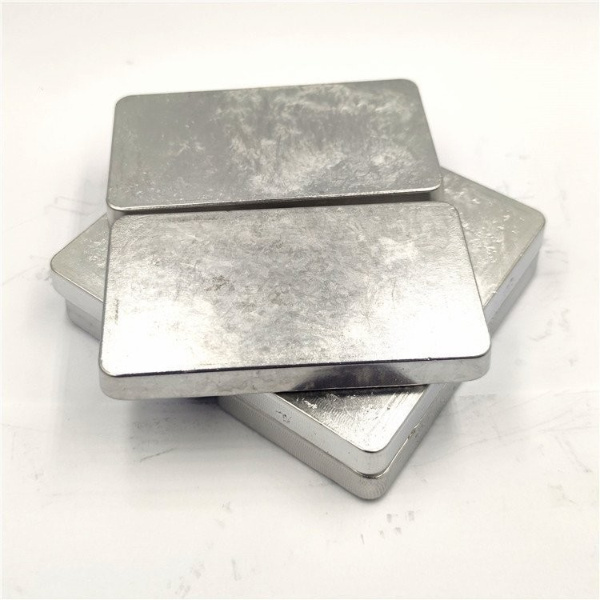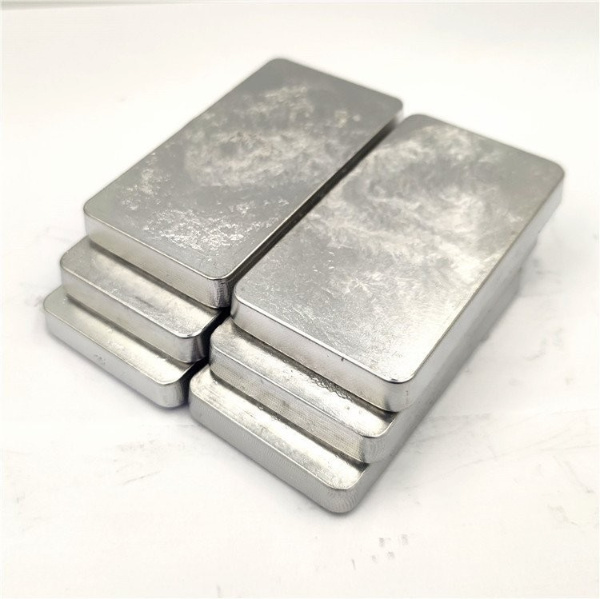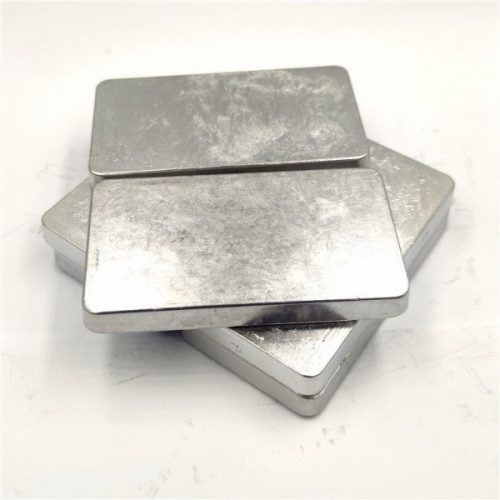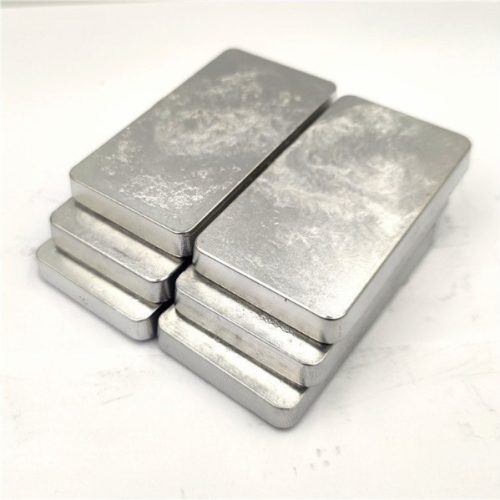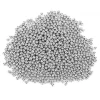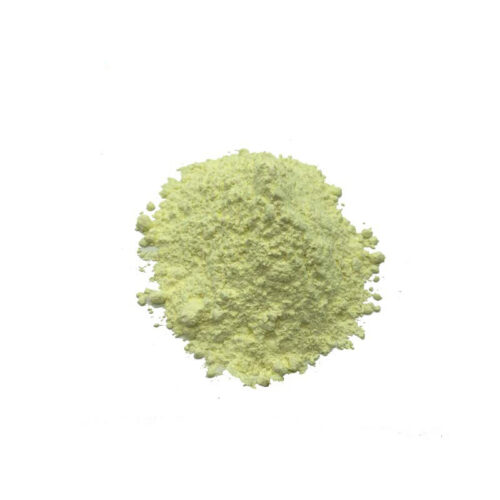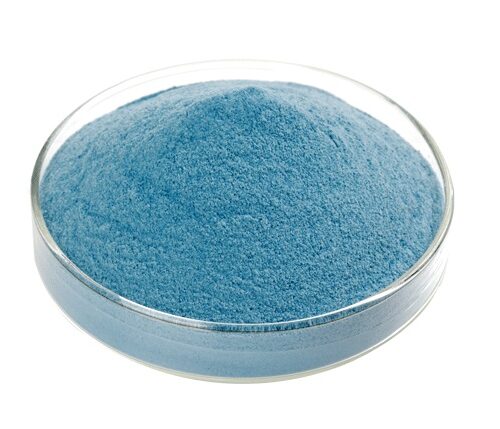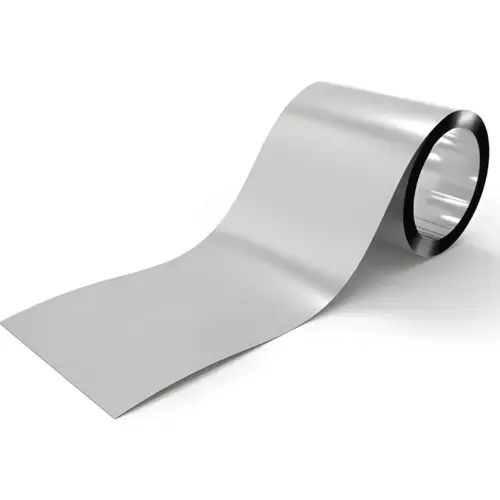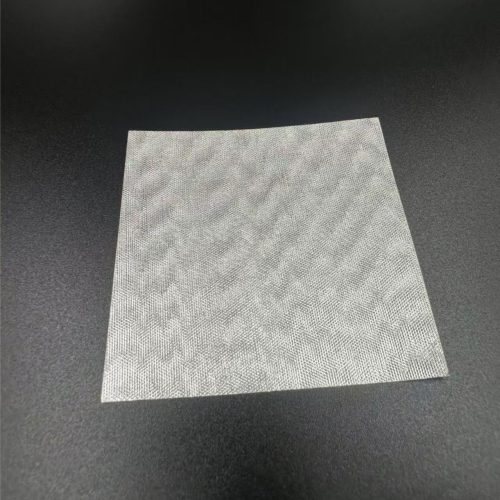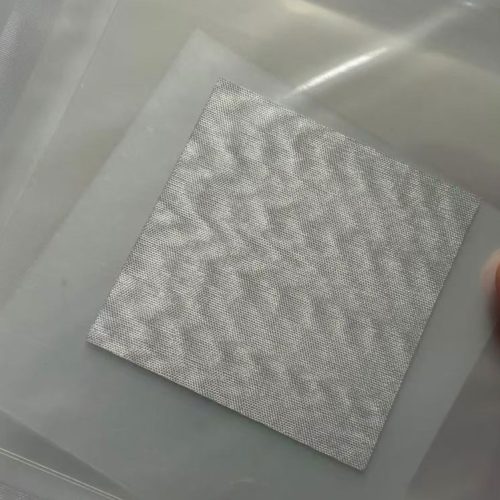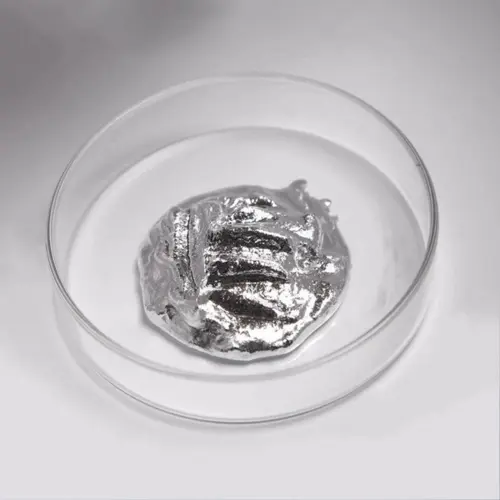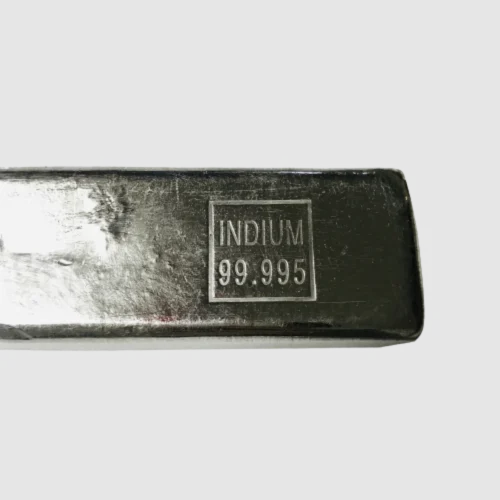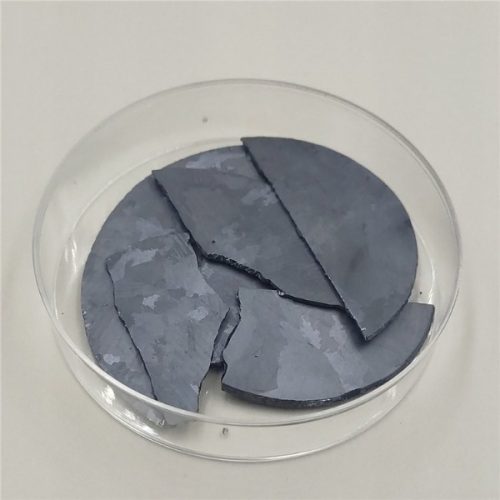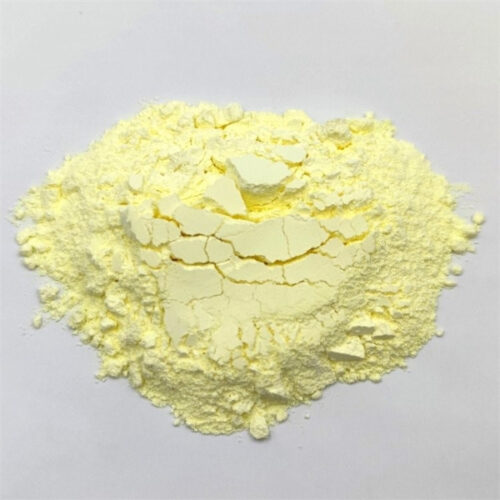Indium-bismut-tin-legering (In51Bi32.5Sn16.5) er en lavtemperatur-eutektisk legering med et smeltepunkt på 60°C. Denne legering er kendt for sin fremragende duktilitet og gode termiske udmattelsesbestandighed. Den er blyfri, cadmiumfri og miljøvenlig. Det unikke smeltepunkt på 60°C giver denne legering specielle anvendelser; det kan bruges som flydende lavtemperaturmetal til varmeafledning i udstyr. Derudover kan det forarbejdes til pulver og bruges som fyldstof i polymerer for at ændre termisk modstand eller som et specielt sikringsmateriale. Vi tilbyder tilpassede behandlingstjenester for indium-bismuth-tin-legeringer, herunder indium-bismuth-tin-granulat, -plader og -tråde.
| Legeringsforhold | In51Bi32.5Sn16.5 |
| Massefylde | 7,88 g/cm3 |
| Smeltepunkt | 60°C |
| Termisk udvidelseskoefficient | 22 |
| Termisk ledningsevne | 25W/m/K |
| Trækstyrke | 33,44 MPa |
Tilpasning
| Legering Beskrivelse | Liquidus* | Solidus* | Tæthed* |
| grader oC/oF | grader oC/oF | gm/cm3 | |
| 49 Bi, 21 In, 18 Pb, 12 Sn | 58/136 | 58/136 | 9.01 |
| 51 In, 32,5 Bi, 16,5 Sn | 60/140 | 60/140 | 7.88 |
| 49 Bi, 18 Pb, 18 In, 15 Sn | 69/156 | 58/136 | 9 |
| 66,3 In, 33,7 Bi | 72/162 | 72/162 | 7.99 |
| 57 Bi, 26 In, 17 Sn | 79/174 | 79/174 | 8.54 |
| 54,0 Bi, 29,7 In, 16,3 Sn | 81/178 | 81/178 | 8.47 |
| 51,4 Bi, 31,4 Pb, 15,2 Sn, 2 In | 93/199 | 87/189 | 9.64 |
| 52 Bi, 31,7 Pb, 15,3 Sn, 1 In | 94/201 | 90/194 | 9.7 |
| 67 Bi, 33 In | 109/228 | 109/228 | 8.81 |
| 52 In, 48 Sn | 118/244 | 118/244 | 7.3 |
| 50 In, 50 Sn | 125/257 | 118/244 | 7.3 |
| 97 In, 3 Ag | 143/290 | 143/290 | 7.38 |
| 95 In, 5 Bi | 150/302 | 125/257 | 7.4 |
Legeringer med lavt smeltepunkt er hovedsageligt sammensat af elementer som indium (In), tin (Sn), vismut (Bi), bly (Pb) og cadmium (Cd). Legeringer, der indeholder metaller med lavt smeltepunkt, såsom thallium (Tl), gallium (Ga), natrium (Na), indium (In) og kviksølv (Hg) betragtes også som legeringer med lavt smeltepunkt. I praktiske anvendelser klassificeres legeringer med et smeltepunkt under tin-bly-eutektikum (61.9% Sn-38.1% Pb, smeltepunkt 183°C) generelt som lavsmeltende legeringer. Disse legeringer, der indeholder elementer som bismuth, bly, tin, cadmium og indium, bruges i vid udstrækning som lodninger, sikringer og termiske komponenter i elektriske, damp-, brandbeskyttelses- og brandalarmsystemer. Som en ny type legeringsmateriale med lavt smeltepunkt har de et betydeligt udviklingspotentiale.
Ansøgninger:
- Medicinsk brug: Primært brugt til at lave strålingsafskærmende blokke af specifikke former.
- Støbning og støbning: Bruges let til støbning af forme til fremstilling af specielle produkter eller forme til specialiserede applikationer.
- Elektronik og elektrisk automatik: Anvendes som termisk følsomme komponenter, sikringsmaterialer og brandalarmenheder.
- Bøjning af metalrør: Anvendes som fyldstof under bøjningsprocessen af metalrør.
- Metallografisk prøveforberedelse: Anvendes som indlejringsmiddel i metallografisk prøveforberedelse.

